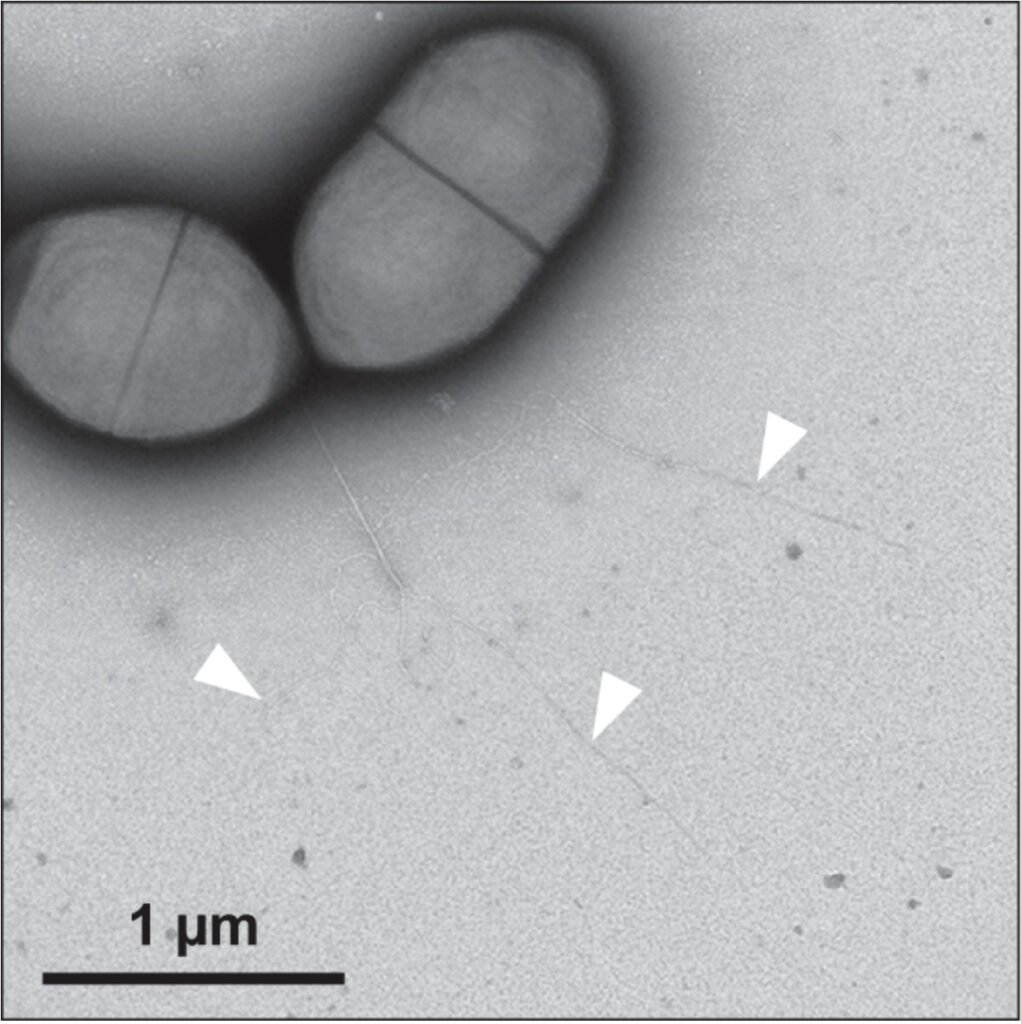Welcome to the Fronzes Lab
The Team Structure and function of bacterial nanomachines is part of the UMR 5234 Microbiologie fondamentale et pathogénicité and is located in the Institut Européen de Chimie et Biologie in Pessac, France
Our research themes
Latest News
Structure of a heteropolymeric type 4 pilus from a monoderm bacterium
Type 4 pili (T4P) are important virulence factors, which belong to a superfamily of nanomachines ubiquitous in prokaryotes, called type 4 filaments (T4F). T4F are defined as helical polymers of type 4 pilins. Recent advances in cryo-electron microscopy (cryo-EM) led to structures of several T4F, revealing that the long N-terminal α-helix (α1) – the trademark of pilins – packs in the centre of the filaments to form a hydrophobic core. In diderm bacteria – all available bacterial T4F structures are from diderm species – a portion of α1 is melted (unfolded). Here we report that this architecture is conserved in phylogenetically distant monoderm species by determining the structure of Streptococcus sanguinis T4P. Our 3.7 Å resolution cryo-EM structure of S. sanguinis heteropolymeric T4P and the resulting full atomic model including all minor pilins highlight universal features of bacterial T4F and have widespread implications in understanding T4F biology.
Published in Nature communications
Nat Commun. 2023 Nov 6;14(1):7143. doi: 10.1038/s41467-023-42872-5.










